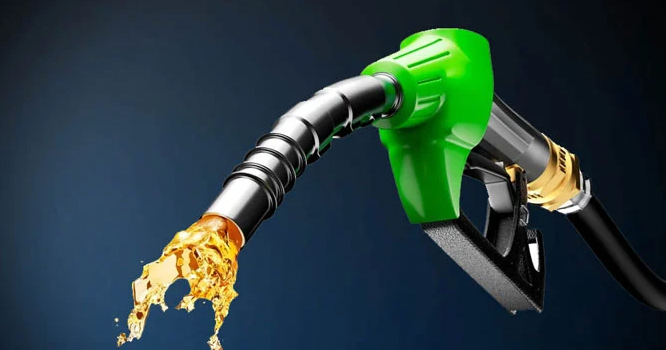- Joined
- Oct 14, 2020
- Messages
- 27,742
- Likes
- 191,921
Economic woes driving global firms’ exodus
Mubarak Zeb Khan
December 31, 2023
More multinational companies have divested their assets or temporarily halted their operations in Pakistan continuing a trend that began in calendar 2022.
Over the past 30 months, numerous firms have chosen to relocate their activities outside of Pakistan or reduce operations due to significant political and economic challenges.
Multinational corporations (MNCs) naturally experience fluctuations in their expansion and downsizing efforts, influenced by factors like access to capital, availability of workforce and strategic considerations. In Pakistan, a combination of policy decisions and an unfavourable regulatory environment has made it relatively easy for these companies to make a choice: either cease operations or pursue cost-cutting measures such as downsizing or divesting their assets.
The outgoing calendar year 2023 began with announcements from corporations such as Lotte Chemicals which sold its whole 75pc ownership and Puma Holdings divested its 57pc stake in January. This was a period when MNCs were examining their worldwide footprints while taking into account a variety of issues. Pakistan was rated at the top due to severe political instability and contradictory economic policies.
In the pharmaceutical sector, three MNCs have left or scaled down their activities in Pakistan in the last two and a half years, and many more are considering leaving. MNCs’ representation in pharmaceuticals has gradually declined from 40 to 24. The pharmaceutical sector faces challenges ranging from medication registration to pricing, particularly from bureaucracy and political regimes. While smuggled pharmaceuticals are more expensive, the political government is unwilling to raise the price of paracetamol from Rs1.50 to Rs1.75 per pill, despite the country’s biggest-ever devaluation and inflation.
Another notable example is Telenor Group’s sale of its Pakistan telco operations to PTCL. Airlift, Swvl, VAVA Cars, and Careem are among the prominent enterprises that have discontinued operations in Pakistan in 2022. However, consumer goods MNCs will continue to operate due to profit margins and a consumer market of 250 million.
Causes of leaving
In the 1990s, developing countries began to implement reforms, while in Pakistan, political parties were busy undermining each other’s governments. Since 2014, the same trend has resurfaced with a new vigour, culminating in a new phase in April 2022. Since then, the country has had political and economic challenges.
Unfortunately, the conflict is not about improving institutions but about replacing one person with another. Two families and one individual drive Pakistani politics. MNCs are closely watching these developments that may only expected in some least-developed countries.
The accountability offices were established in response to political victimisation during the 1990s and early 2000s. Courts have been preoccupied for the previous two and a half years with political bails and case clearances, as well as taking up new cases of politicians.
The administration is preoccupied with filing case after case against politicians, while court orders for bail are ignored. Non-compliance with a court decision is also a major concern for investors. Saudi Arabia has recently tied the availability of international arbitration to any investment.
Policymaking in Pakistan is uncertain. The corporate sector was surprised by super taxes on certain industries and foreign exchange bank profits. Instead of letting the State Bank of Pakistan handle foreign exchange manipulation, the government chose the option of taxing banks for exchange transaction gains, which the court stayed. The decision already sends a bad signal to foreign investors.
High borrowing rates of 22pc also make working capital and expansion challenging. Industrial energy costs rise daily. Unabated smuggling, under-invoicing and intellectual property rights infringement are also important worries for MNCs.

Mubarak Zeb Khan
December 31, 2023
More multinational companies have divested their assets or temporarily halted their operations in Pakistan continuing a trend that began in calendar 2022.
Over the past 30 months, numerous firms have chosen to relocate their activities outside of Pakistan or reduce operations due to significant political and economic challenges.
Multinational corporations (MNCs) naturally experience fluctuations in their expansion and downsizing efforts, influenced by factors like access to capital, availability of workforce and strategic considerations. In Pakistan, a combination of policy decisions and an unfavourable regulatory environment has made it relatively easy for these companies to make a choice: either cease operations or pursue cost-cutting measures such as downsizing or divesting their assets.
The outgoing calendar year 2023 began with announcements from corporations such as Lotte Chemicals which sold its whole 75pc ownership and Puma Holdings divested its 57pc stake in January. This was a period when MNCs were examining their worldwide footprints while taking into account a variety of issues. Pakistan was rated at the top due to severe political instability and contradictory economic policies.
In the oil sector, global energy giant Shell announced on June 14 that it will leave Pakistan after 75 years of existence. Another oil company is expected to make a similar announcement within the next year, reducing the presence of MNCs in the energy industry to a bare minimum. The issue is unrelated to whether or not Shell products will be available following its exit. The items will be available in the domestic market, but the leaving of one of the world’s top 500 corporations would send a negative signal to other MNCs looking to invest in Pakistan. Before making any choice, MNCs always consult with enterprises that already have a presence in a given country.Political instability and inconsistent policies are main causes
In the pharmaceutical sector, three MNCs have left or scaled down their activities in Pakistan in the last two and a half years, and many more are considering leaving. MNCs’ representation in pharmaceuticals has gradually declined from 40 to 24. The pharmaceutical sector faces challenges ranging from medication registration to pricing, particularly from bureaucracy and political regimes. While smuggled pharmaceuticals are more expensive, the political government is unwilling to raise the price of paracetamol from Rs1.50 to Rs1.75 per pill, despite the country’s biggest-ever devaluation and inflation.
Another notable example is Telenor Group’s sale of its Pakistan telco operations to PTCL. Airlift, Swvl, VAVA Cars, and Careem are among the prominent enterprises that have discontinued operations in Pakistan in 2022. However, consumer goods MNCs will continue to operate due to profit margins and a consumer market of 250 million.
Causes of leaving
In the 1990s, developing countries began to implement reforms, while in Pakistan, political parties were busy undermining each other’s governments. Since 2014, the same trend has resurfaced with a new vigour, culminating in a new phase in April 2022. Since then, the country has had political and economic challenges.
Unfortunately, the conflict is not about improving institutions but about replacing one person with another. Two families and one individual drive Pakistani politics. MNCs are closely watching these developments that may only expected in some least-developed countries.
The accountability offices were established in response to political victimisation during the 1990s and early 2000s. Courts have been preoccupied for the previous two and a half years with political bails and case clearances, as well as taking up new cases of politicians.
The administration is preoccupied with filing case after case against politicians, while court orders for bail are ignored. Non-compliance with a court decision is also a major concern for investors. Saudi Arabia has recently tied the availability of international arbitration to any investment.
Policymaking in Pakistan is uncertain. The corporate sector was surprised by super taxes on certain industries and foreign exchange bank profits. Instead of letting the State Bank of Pakistan handle foreign exchange manipulation, the government chose the option of taxing banks for exchange transaction gains, which the court stayed. The decision already sends a bad signal to foreign investors.
High borrowing rates of 22pc also make working capital and expansion challenging. Industrial energy costs rise daily. Unabated smuggling, under-invoicing and intellectual property rights infringement are also important worries for MNCs.

Analysis: Economic woes driving global firms’ exodus
Over past 30 months, numerous firms have chosen to relocate their activities or reduce operations due to political and economic challenges.
www.dawn.com





 .
.






